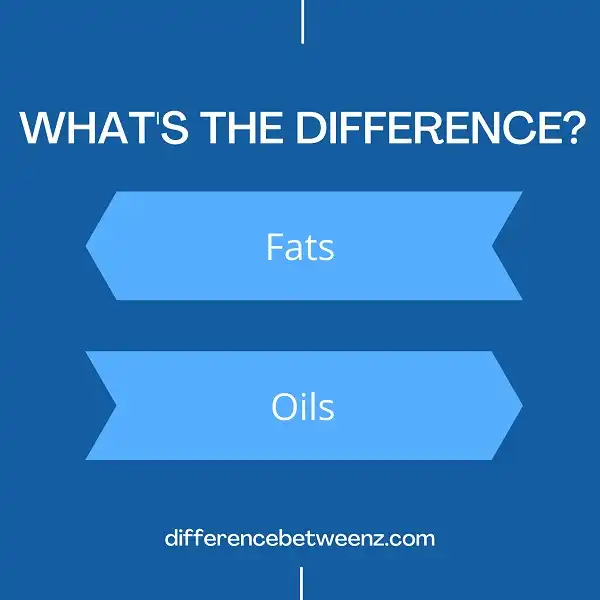Fats vs. Oils
Differences between Fats and Oils: – Fats and oils are very important for humans. They are essential in daily diet plans. But you have to take into account that they are not the same and that their origin is usually different.
In spite of everything, it is important that you take into account that in the day to day both concepts could be used of indistinct way to talk about the same thing; since both oils and fats contain 9 calories per gram.
Differences between Fats and Oils
To clarify your doubts, below we will explain to you the difference between fats and oils.
Fats
Fats play an important role in chemical and metabolic functions. They break down in the human body thanks to enzymes called lipases, which are produced in the pancreas. Also, humans have an adipose tissue, which is known to be a fat deposit. This tissue is a loose connective composed of adipocytes. It makes up about 80% of fat and is found under the skin, around the internal organs, bone marrow and breast tissue. Its main role is to store energy in the form of lipids. An excess of this causes obesity in people.
The main types of fats are saturated and unsaturated. Almost all foods: milk, margarine, milk and some oils contain a mixture of fats. Food is called high in saturated or unsaturated fats, depending on which type predominates; that is, it is in greater quantity.
Fats are usually of animal origin. We can find them in the meats or incorporated in certain foods; especially in junk food.
Oils
Generally, the oils that we use most are of vegetable origin; although they can also be extracted from animals (cod liver oil …), for this reason, this term tends to indicate that they are substances from plants.
The oils may have monounsaturated or polyunsaturated fatty acids, which are essential for the human organism; as they act to lower cholesterol in the blood, transporting it to the liver for processing.
Among the sources of monounsaturated fatty acids include: olive oil, canola oil, peanut or peanut oil and sesame oil. Of all these, the peanut stands out for its good thermal stability and is ideal for frying at high temperatures.
Among the polyunsaturated fatty acids are: sunflower oil, wheat and cold water fish (salmon, tuna …). These are good sources of omega-3 fats. These oils are best suited for low temperature applications such as salad dressings and sauces.
Both fats and oils are part of a subgroup of lipids known as triglycerides. The term “lipid” is used in the medical or biochemical context to refer to fat, whether in liquid or solid state.
In their desire to become thinner, many people have begun to eliminate or drastically reduce these nutrients from their diets, however, this is not the most advisable; because as stated above, they are essential for the organism to function properly; since they represent a source of energy.
Note: The word oil can also be used to refer to some of the oil-derived benefits.
Key differences between Fats and Oils
- At normal temperature, the fats are in the solid state, while the oils are in the liquid state.
- Generally the term fat is used to indicate that they are of animal origin, while the term oil is used to give an idea that it is of vegetable origin.
- The types of fats are: saturated fats, Tran’s fats, and unsaturated fats.
- While the types of oils are: monounsaturated and polyunsaturated.


